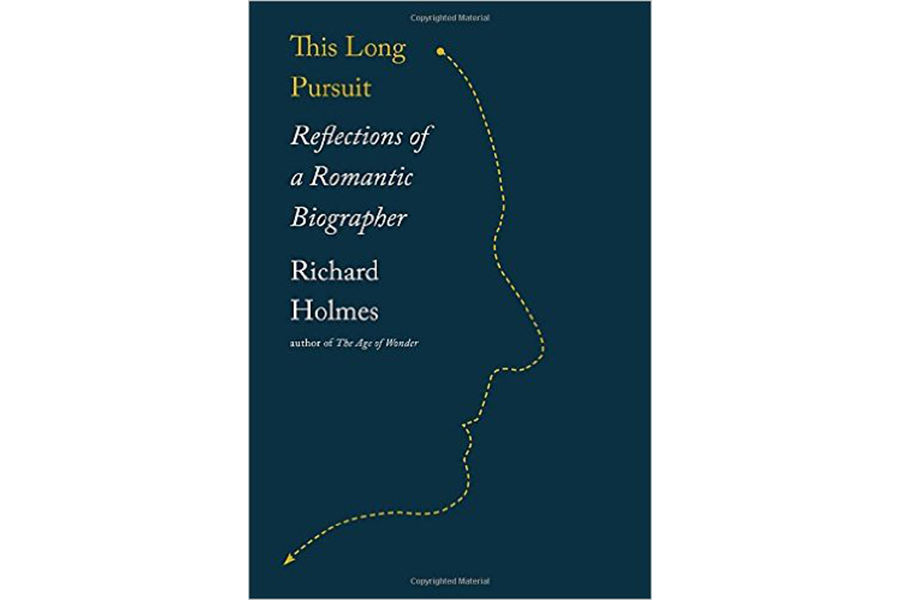'This Long Pursuit' is a biographer's paean to his craft
Loading...
Richard Holmes is best known for “The Age of Wonder,” his 2008 book about how 19th-century scientists and writers advanced a common culture of curiosity, leading a knowledge revolution that continues to touch the 21st-century. It was a breakthrough bestseller for an author who was certainly no newcomer to the Romantic era, with acclaimed biographies of Percy Bysshe Shelley and Samuel Taylor Coleridge to his credit.
In This Long Pursuit, Holmes takes readers into his decades-long work of getting other lives on paper. Composed mostly of lectures and previously published articles about his primary craft of biography, “This Long Pursuit” is Holmes’s “celebration of a form, an art, and a vocation that I have intensely loved over more than forty years, and which I still do not entirely understand.” It’s the third installment of a trilogy of autobiographical works that began with “Footsteps” in 1984 and followed with “Sidetracks” in 2000. Extending those earlier, equally fragmentary memoirs, “This Long Pursuit” continues the idea “that the serious biographer must physically pursue his subject through the past. Mere archives (are) not enough. He must go to all the places where the subject had ever lived or worked, or traveled or dreamed. Not just the birthplace ... but the temporary places, the passing places, the lost places, the dream places.”
Driven by the notion that landscapes shape a life, Holmes paints portraits of place in his narratives – perhaps most powerfully in a chapter where he recalls a week spent in the apartment in Rome where John Keats had died in 1821. “I was actually working on my life of Shelley,” Holmes tells readers. “But for those six days it was the life of Keats, or rather his death, which haunted me. Every creak that ran through the old polished wooden floorboards of the apartment behind me broke my concentration and made me think, painfully and uneasily, of the dying man, and the letters from Fanny Brawne he would not open, and the opium painkiller that was taken from him, and the poems he was forbidden to write.”
Like Keats’s phantom, history haunts Holmes at every turn, creating a book in which the past persistently peers over the present’s shoulder, collapsing the distance between then and now. In “Forgetting,” a chapter about the vagaries of memory, Holmes sits by a small stream that eventually connects with the Gardon River in southern France – the current a metaphor of sorts for the tributaries of time that take the reader quickly back to the Romans who, centuries before, built a bridge over the waterway with rows of arches “balancing airily upon one another, like some brilliant troupe of performing circus elephants, those creatures that never forget.”
That’s vintage Holmes – the voices of antiquity speaking with an almost eerie immediacy across the ages, like a neighbor chatting over the fence. In the tradition of most successful historians and biographers, Holmes seems to achieve this intimacy with the past by immersing himself, trance-like, within a given terrain, with every brick or rock or tree a talisman tugging him deeper and deeper into the immense well of human experience.
Holmes’s closeness with his surroundings sometimes invites the reader in, yet occasionally shuts him out. “Forgetting,” for example, reveals an author so familiar with the French setting of his essay that he assumes we’re equally well versed in the locale. Only by circumstantial clues do we learn that we’re even in France at all. In other parts of the book, such as the opening chapter on travel, Holmes uses French words and expressions such as à la belle étoile and fichiére without translation. (The former refers to sleeping under the stars, and by the latter, he means a bureaucratic file.)
If Holmes sometimes seems as if he’s in a private reverie rather than a public conversation, his sensibility tends to charm rather than chafe, expressing as it does a popular literary type: the slightly absent-minded professor, afoot in the world and cheerfully hypnotized by his own thoughts.
In fact, Holmes’s style pleasingly resembles that of his fellow Englishman, the late neurologist Oliver Sacks. Like that celebrated man of letters, Holmes comes across as contagiously curious, casually erudite, and just a bit daft.
But Holmes is clearly in on the joke, keenly aware of his mild eccentricity. “In restless middle age,” he writes in opening one chapter, “I became crazy about hot-air balloons.” What follows is a passage of magical imagery:
"Gazing from my study window in Norfolk at their stately shapes, as they float at dusk over the beech trees down the line of the River Yare valley, fills me with pleasure and longing. I watch the twinkling flame of their gas-burners, like celestial pilot-lights in the sky, and catch the distant thunder of their propane breath. My heart leaps up when I behold these dragons in the sky."
Writing like this reveals the abiding gift of Richard Holmes. In spending so much of his life chronicling the lives of poets, he has, to the delight of his readers, become one.
Danny Heitman, a columnist for The Baton Rouge Advocate, is the author of “A Summer of Birds: John James Audubon at Oakley House.”








